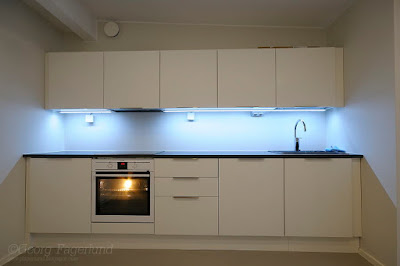Wednesday, November 30, 2016
Light and white
Sunday, November 27, 2016
Control
I'm not lucky enough to live in a fancy place with lots of square meters. What's worse is that the ceiling is pretty low, you can stand and touch it with your hand without a ladder or chair. The ceiling is white as they tend to be often and the walls are painted light beige. Not too bad if you want to shoot images that require light, maybe some hi-key portraits. But how about some dark low-key stuff? Biggest issue would be the light bouncing from the ceiling and walls, and hitting things you don't want. So definitely a problem, but solvable problem.
A large black piece of fabric will make a nice dark backdrop and kill some of that light that otherwise would reflect from the walls. The next thing would be to control your light. For the following images I used two different kinds of light modifiers, a home made grid which nicely directs the light to only one direction, and a flash bender, which allows you to direct the light and prevent light hitting for example the wall or ceiling or both.
So in the end it's all about controlling the light. In a a large space it's obviously easier, but if you are working in a small room you still can manage. Fastest sync speed possible, stopped down f-number, inverse square law, light modifiers, all of these help you to have control over your light.
Wednesday, November 16, 2016
Lighting up the winter
Monday, November 7, 2016
How many do you need?
Obviously the essential form shaper in photography is light. We have the ambient light and then there is the artificial light. So often we tend to love the first, and to fear the second. It feels so safe to rely on the surrounding light. Just choose your aperture and shutter speed and go. But how about when the light surrounding us is not good or there just is too little of it? Of course we could always pump up our ISOs or use a slower shutter, but all this could introduce some other problems, like noise or unsharp subject. That's when the artificial light comes in handy. There's lots of options available, but my favorite is manual speedlights. They are cheap and easy to haul around where ever you go. So, how many lights do you really need for a shoot? I own a couple speedlight units. I carry them with me almost always and everywhere, and then I usually found my self using only one single. We are pretty satisfied with only one sun, so why wouldn't one speedlight do just as well? The only thing to remember is, get that thing off camera. No matter if you use a cable, optical or radio trigger... Get it off your camera! And learn to work with one light first, later it's easy to ad some more lights if you feel or have to. Here's a few portraits made with only on single off camera flash...
Tuesday, November 1, 2016
Sauna shoot
Shooting interiors is really not my favorite, but I couldn't resist when I was offered a chance to make a couple of photos of a recently renovated sauna in Helsinki, Finland. The real challenge in interior photography is the lines. When I made my first interior shots few years ago I tried to shoot from strange perspectives, and as you can guess the images looked distorted and strange. Later I learned that the best way to shoot is to try to keep the lines straight. Just try to avoid tilting your camera, unless you use a tilt shift lens. The good thing with architecture, buildings, rooms, etc. is that they tend to be very static subjects, so you don't need to hurry too much. Place the camera on a tripod, use long shutter speeds, try different variations in shutter speeds, apertures and composition. just take your time. Use ambient light, turn on the lights, ad some flash light.
Subscribe to:
Comments (Atom)





















